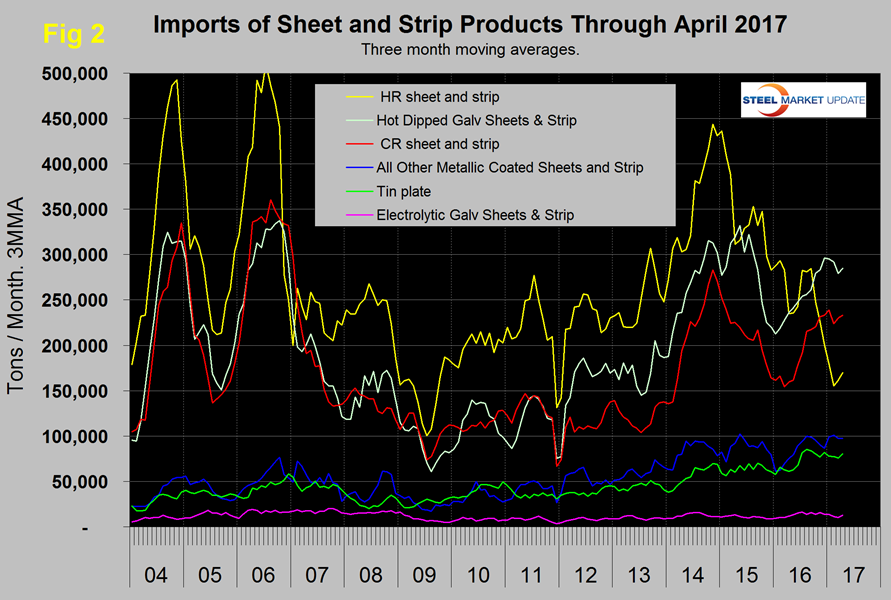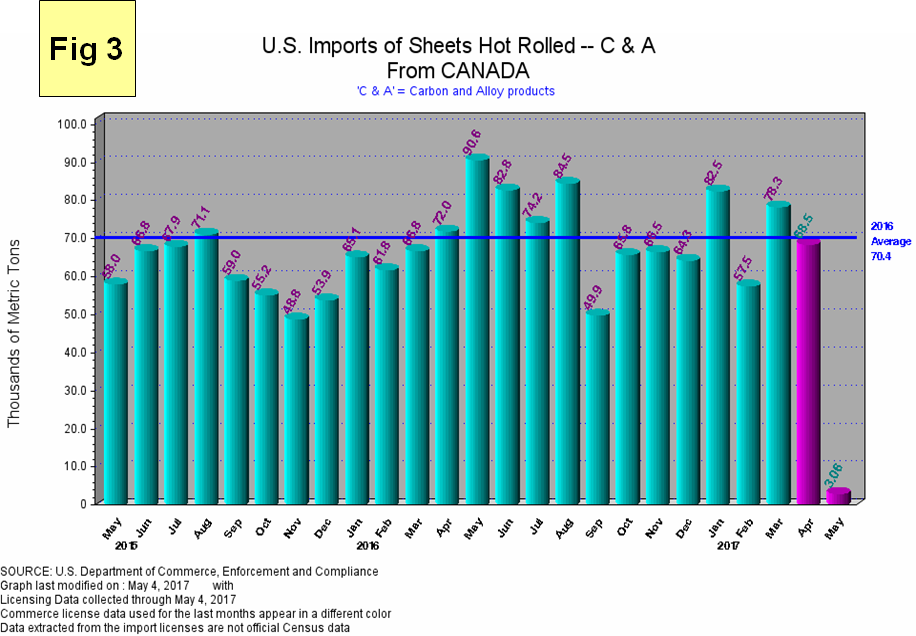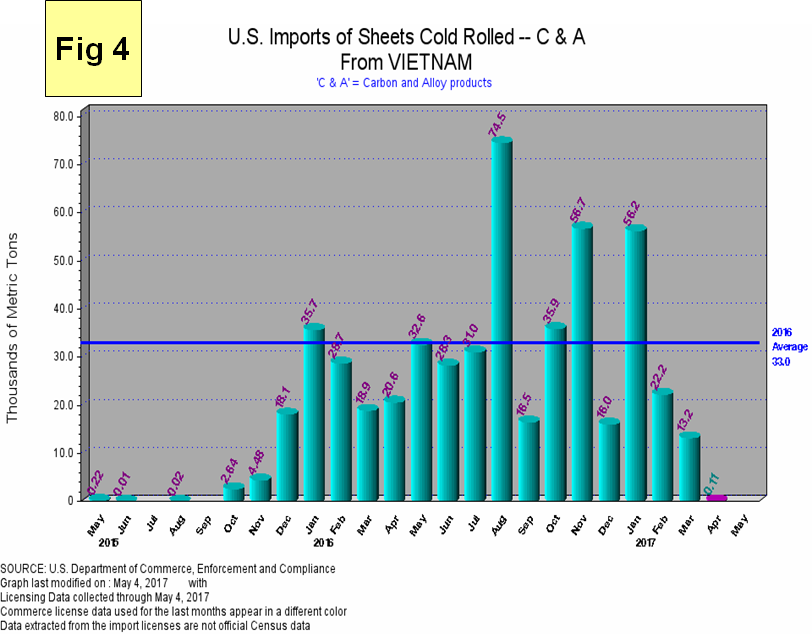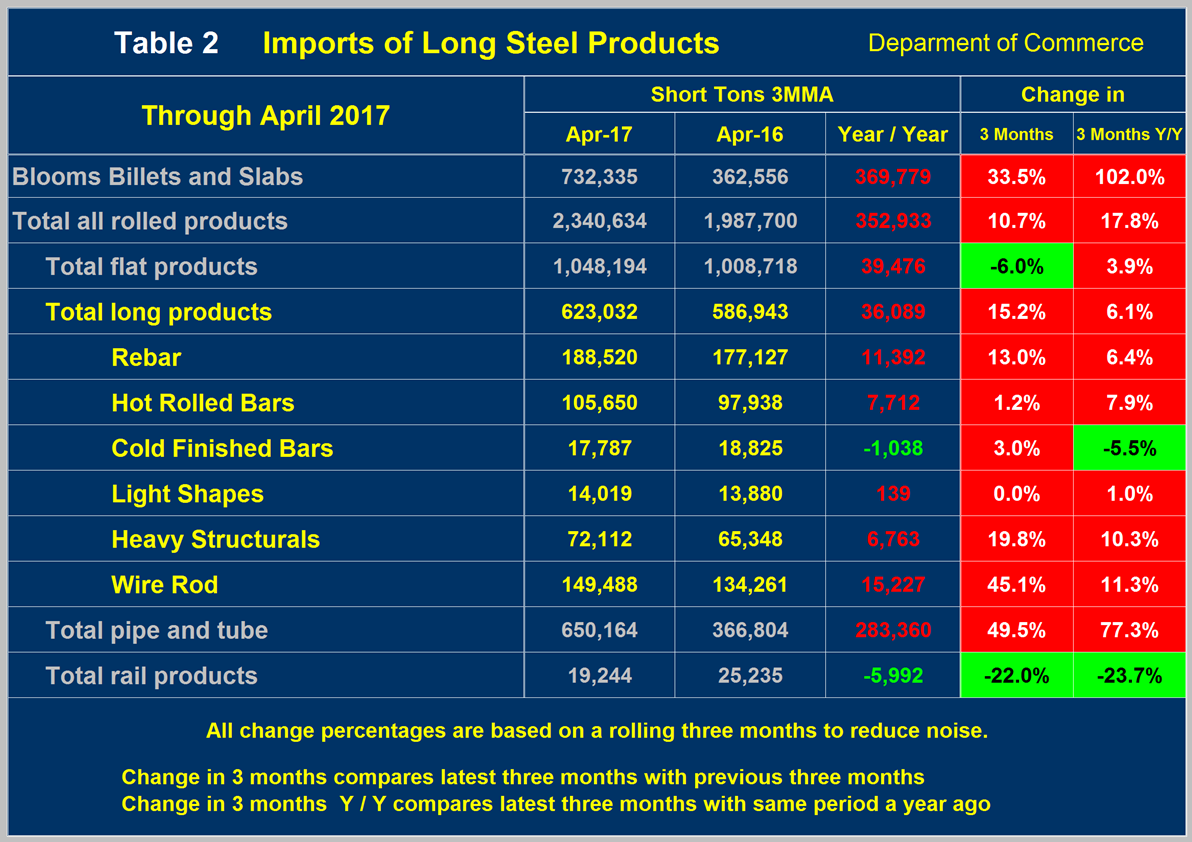Prices
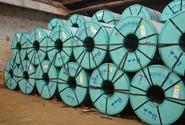
May 10, 2017
Flat, Long, and Semi-Finished Imports through April 2017
Written by Peter Wright
The latest license data was reported by the Steel Import Monitoring and Analysis system of the US Commerce Department on May 2nd and closed out the April data. An explanation of the methodology that we at SMU use to analyze the trade data is given at the end of this piece. All volumes in this analysis are reported in short tons. The total volume of carbon and alloy products was up again in April to the highest level since May 2015. Flat rolled products were down but semis and longs both increased. Total rolled product licensed imports in the single month of April were 2,582,945 tons with a three month moving average (3MMA) of 2,340,634 tons. We prefer not to dwell on single months results because of the extreme variability that can occur in individual products. In the comments below we use only three month moving averages because this presents a more representative picture.
Figure 1 shows the 3MMA through April licensed tons of semi-finished, flat and long products since January 2004.
Imports of semi-finished in April were 710,110 tons with a three month moving average of 732,635 tons. This was the highest 3MMA since February 2015. “Flat” includes all hot and cold rolled sheet and strip plus all coated sheet products plus both discrete and coiled plate. The 3MMA of flat rolled imports was up slightly after declining for seven straight months. Long product imports have been range bound between 519,000 tons and 772,000 tons since April 2014 with no particular trend evident. In April the 3MMA of long product imports was 623,032 tons.
Figure 2 shows the 3MMA trend of sheet and strip products since January 2004.
The total of these products was down by 2.9 percent in three months through April compared to three months through January but up by 13.1 percent year over year. HRC was down sharply in the five months through February and stayed down in March and April. CRC and HDG are now much higher than HRC on a 3MMA basis which is very unusual. Other metallic coated, mainly Galvalume has been trending up since 2009. Electro-galvanized and tin plate have declined slightly in the last year.
In its weekly license imports SIMA ranks countries by recent volume for each product and supplies graphs of monthly tonnage. The leading nations by recent volume are HRC, Canada, CRC, Vietnam and HDG, Canada. Figures 3, 4 and 5 show the monthly volume from these nations in the last 24 months. These charts include the first few days of May so the far right bars should be ignored.
Table 1 provides an analysis of major product groups and of sheet products in detail. It compares the average monthly tonnage in the three months through April 2017 with both three months through January (3M/3M) and three months through April 2016 (Y/Y).
On a Y/Y basis the 3MMA of semi finished products more than doubled, a result that was partly driven by the volume data for February last year which even on a 3MMA basis was exceptionally low. The total of all rolled products was up by 17.8 percent Y/Y. Total sheet products were up by 13.1 percent. Tubulars were up by 77.3 percent and long products were up by 6.1 percent.
There were big differences between the individual sheet products compared to last year. HRC was down by 27.7 percent and CRC and HDG were up by 45.9 percent and 20.6 percent respectively. Other metallic coated (mainly Galvalume) was up by 29.2 percent. Table 2 shows the same analysis for long products. The total tonnage of long products was up by 36,089 tons per month Y/Y. On a 3M/3M basis the total volume of long products increased by 15.2 percent.
Figure 6 shows the import market share of sheet and long products through February which is the latest data available (March exports and AISI shipment data will be released early next week).
The import market share of sheet products peaked at 24.3 percent in April 2015. After declining to 17.4 percent in May 2016 the import share gradually increased to 21.7 percent in November and declined again to 20.7 percent in January and 19.4 percent in February. Long product import market share peaked at 29.4 in April 2015, and in both January and February stood at 23.1 percent.
Net imports equals imports minus exports and our analysis is based on the final volumes through January. We regard this as an important look at the overall trade picture and its effect on demand at the mill level. Figure 7 shows net sheet product imports on a 3MMA basis at 558,054 tons in February which was down from 665,083 in August last year.
The total of net sheet imports in 2016 was down by 1.459 million tons from the 2015 total. Compared to imports, exports have been relatively consistent for almost eight years. Net sheet steel imports are still high by historical standards. If as expected the Fed continues to raise interest rates in 2017, the US $ will appreciate against the currencies of the steel trading nations and this in turn will put upward pressure on imports and downward on exports in the balance of 2017.
Explanation: SMU publishes several import reports ranging from this very early look using licensed data to the very detailed analysis of final volumes by product, by district of entry and by source nation which is available on the premium member section of our web site. The early look, the latest of which you are reading now has been based on three month moving averages (3MMA) using the latest licensed data, either the preliminary or final data for the previous month and final data for earlier months. We recognize that the license data is subject to revisions but believe that by combining it with earlier months in this way gives a reasonably accurate assessment of volume trends by product as early as possible. We are more interested in direction than we are in absolute volumes at this stage. The main issue with the license data is that the month in which the tonnage arrives is not always the same month in which the license was recorded. In 2014 as a whole our data showed that the reported licensed tonnage of all carbon and low alloy products was 2.3 percent less than actually receipts, close enough we believe to confidently include licensed data in this current update. The discrepancy declined continuously during the course of the twelve month evaluation as a longer time period was considered.
Statement from the Department of Commerce: The Steel Import Monitoring and Analysis (SIMA) System, under the US Department of Commerce, collects and publishes data of steel mill product imports. By design this information provides stakeholders valuable information on steel trade with the United States. This is achieved through two tools: the steel licensing program and the steel import monitor. All steel mill imports into the United States require a license issued by the SIMA office. The SIMA Licensing System is an on-line automatic system for users to register, apply for, and receive licenses in a quick and timely manner. This on-line system allows importers to process imports with minimal effort and added efficiency. In addition to managing the licensing system, SIMA publishes near real-time aggregate data on steel mill imports into the United States. These data incorporate information collected from steel license applications and publicly released Census data. The data are displayed in tables and graphs for users to analyze various levels and changes in steel trade involving the United States. Additionally, SIMA provides data on US steel mill exports, as well as imports and exports of select downstream steel products.




